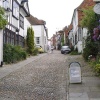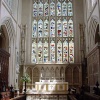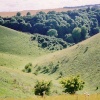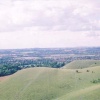Please login or click here to join.
Forgot Password? Click Here to reset pasword
 |  |  |  |  |  |
| Rod Burkey Posts: 554 Joined: 2nd Sep 2008 Location: UK | quotePosted at 12:51 on 25th April 2014 Is it just me, or are there a lot of blurred pictures being submitted currently? I am surprised that some who submit pictures are happy to send images that are just not focused. I know this is not a site that sets a standard, but there are limits. I do not intend saying which images are blurred, as I truly do not wish to offend anyone, but they must be pretty obvious to anyone looking at them. Sorry to be moaning again, but this wonderful site deserves more respect from those who submit poor images, and offer them for sale. Edited by: Rod Burkey at:25th April 2014 13:31 |
| Rod Burkey Posts: 554 Joined: 2nd Sep 2008 Location: UK | quotePosted at 15:22 on 25th April 2014 The thing is John, I find it hard to believe that a blurred image can be thought of as worthy of a site which even hopes to offer pictures for sale. I think I am flogging a dead horse, but seeing so many less than sharp images probably caused a knee jerk reaction. So, as far as I am concerned, I have made my point (maybe once too often) and intend this time to say no more and keep my thoughts to myself. Sorry to have banged on about it again. Over and out.
|
| Edward Lever Posts: 734 Joined: 22nd Dec 2005 Location: UK | quotePosted at 16:27 on 25th April 2014 I suspect that most cases of poor focussing are due to being overly confident in the capabilities of Autofocus. Usually, the Autofocus systems give good results, but sometimes they will focus on the wrong thing. The 'out-of-focus' effects are particularly noticeable if the depth of field is small i.e. when working with a lens at wide aperture. Manual focus is the answer in such cases, but it is often fiddly to use on a compact camera. It was not until I began using a DSLR a few years ago that I made more use of Manual Focus for 'tweaking' the focus setting. |
| Edward Lever Posts: 734 Joined: 22nd Dec 2005 Location: UK | quotePosted at 22:10 on 25th April 2014 On 25th April 2014 19:11, John Lawrence wrote:
Checking white balance is much more difficult, since the eye's judgement of colour is very subjective when viewing a lit screen. For professional results, some form of hardware based colour calibration of the monitor is required. However, for amateur purposes, setting the camera White Balance to Auto at the time of shooting gives reasonable results with most scenes. Where there is a predominant colour cast in the scene, it is better to set the colour temperature adjustment of the camera to suit the incident light. Also, shooting in RAW gives more flexibility for adjusting white balance afterwards. |
| Dave John Posts: 22335 Joined: 27th Feb 2011 Location: England | quotePosted at 22:50 on 25th April 2014 By and large I tend to leave my white balance on CLOUDY. It tends to give a slightly warmer feel but as always can be adjusted if shooting in Raw. As to calibrating monitors, this is something I have never done, but undertstand that it not a simple 'one off' procedure. I believe, although not 100% certain, that it is an ongoing operation and has to be redone at regular intervals. And as to out of focus shots, this should really not happen nowadays as the auto focus systems of the vast majority of cameras are phenominally acurate, other than in very poor lighting conditions where the focus sensor cannot sufficient contrast to operate. This leads me to think that the photographers in question are probably not focussing on what they want to be the focal point of the image. Aperture setting can also have a major effect on the 'apparent' sharpness of an image, or depth of field if you prefer. The smaller the f-number, f/1.8, f/2.8 etc, the narrower the band of apparent sharp focus. The higher the f-stop, f/16, f/22 etc the band of apparent sharp focus. Hence portraits tend to be shot at the larger apertures and landscapes at the smaller apertures. Bu as Edward rightly says the resolution of the modern monitor is amazing and as such poor out of focus images should stand out a mile. John, good to see you are still persevering with RAW, you won't regret it Edited by: Dave John at:25th April 2014 22:51 |
| Dave John Posts: 22335 Joined: 27th Feb 2011 Location: England | quotePosted at 23:27 on 25th April 2014 If you shop around John, you will find Elements 12 going for roundabout the £55-60 mark and that comes with ACR bult in, Adobe Camera Raw which is Adobes own RAW converter. Well worth going for mate. |
| Edward Lever Posts: 734 Joined: 22nd Dec 2005 Location: UK | quotePosted at 08:41 on 26th April 2014 On 25th April 2014 22:29, John Lawrence wrote:
Adjusting the white balance on the camera shouldn't affect the lightness or darkness of the image very much, if all is being adjusted is the colour temperature. Generally, all is needed is a slight 'tweak' to correct for different light sources eg. Daylight / Cloudy / Tungsten, or you can input the actual colour temperature of the light source in degrees Kelvin. If you work in RAW, there is a facility in most RAW converters to take a spot sample of a grey area of the image, which then sets the white balance for the whole image. |
| Rod Burkey Posts: 554 Joined: 2nd Sep 2008 Location: UK | quotePosted at 09:21 on 26th April 2014 I also find that selecting a white object in the image with the white balance selection tool in RAW turns the whole image into a more realistic rendition colour-wise. I use CS5 but I think most Raw converters have a white balance tool. |
| Dave John Posts: 22335 Joined: 27th Feb 2011 Location: England | quotePosted at 21:28 on 26th April 2014 The white balance selection dropperin ACR is a very good tool but I think it also helps if you understand a bit about the way the camera meters any given scene. Metering whether in camera or by hand held meter is based on a neutral grey of around 18% which as mentioned in another thread is pretty much the tone of the caucasian skin hence indifficult situations taking a reading from the palm of the hand. But also just as good a tool is the colour temperature slider where you can see the image change as you move the sliderand ecide what suits you best John, I am self taught in Photoshop (CS4 and Elements) and am still learning so don't worry about that. At least by trying it you obviously want to get the best you can out of your images. |
| Edward Lever Posts: 734 Joined: 22nd Dec 2005 Location: UK | quotePosted at 10:18 on 27th April 2014 The white balance dropper tool relies on the sampled area of the image being a neutral grey. Often what looks like grey may have a colour cast, which might make the white balance worse. Ultimately, it is a subjective choice, unless you have monitor calibration equipment (which I don't). Personally, I look for a grey area in the image that has equal digital levels for Red, Green & Blue, and sample off that area. |